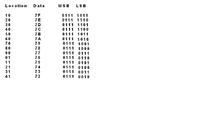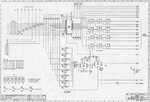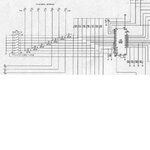tait 700
Junior Member level 2
Thanks Brian,
The Channel Frequencies are all the same for each channel. The only thing that varies with each selection is the CTCSS tone that is allocated to each Channel Freq "spot" i.e 118.8 is allocated to Channel number 6 with a RX Freq of 470 mhz.
Selecting the correct Dip Switch settng on the radio Eprom board tells the eprom which Channel to select and the eprom in turn provides the correct setting for the Tone board which has an identical Dip switch arrangement so you can manually set the CTCSS tone for each channel if you wish.
In this arrangement all the Dip switches are set to open and the radio eprom opens or closes them depending on which tone / channel combination is selected by the Channel Change panel .
I have the radio Eprom programmed and installed in the module and from what i can see manually switching the Dip Switches to correspond with the printout from the programming software is providing the correct Channel / CTCSS combination.
I will go ahead and burn a new Eprom with this .Bin file and then check as you suggested which lines are either high or low and see if they match the Front panel push button settings and the 7 Seg LED.
Thanks again for your help,
Cheers
Chris S.
The Channel Frequencies are all the same for each channel. The only thing that varies with each selection is the CTCSS tone that is allocated to each Channel Freq "spot" i.e 118.8 is allocated to Channel number 6 with a RX Freq of 470 mhz.
Selecting the correct Dip Switch settng on the radio Eprom board tells the eprom which Channel to select and the eprom in turn provides the correct setting for the Tone board which has an identical Dip switch arrangement so you can manually set the CTCSS tone for each channel if you wish.
In this arrangement all the Dip switches are set to open and the radio eprom opens or closes them depending on which tone / channel combination is selected by the Channel Change panel .
I have the radio Eprom programmed and installed in the module and from what i can see manually switching the Dip Switches to correspond with the printout from the programming software is providing the correct Channel / CTCSS combination.
I will go ahead and burn a new Eprom with this .Bin file and then check as you suggested which lines are either high or low and see if they match the Front panel push button settings and the 7 Seg LED.
Thanks again for your help,
Cheers
Chris S.


